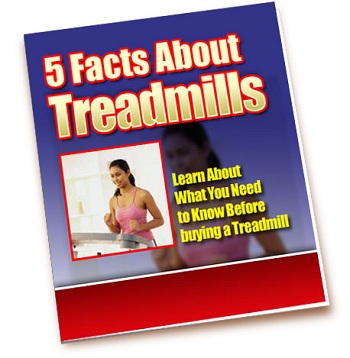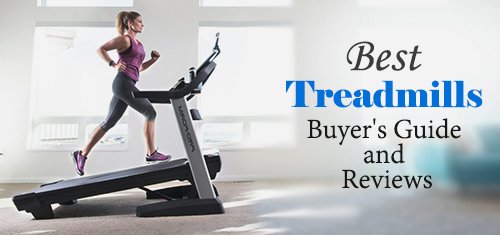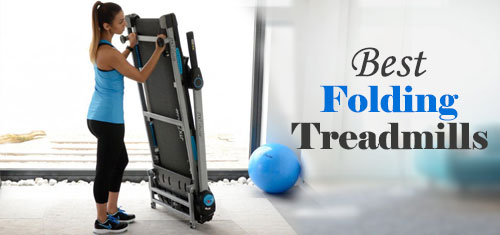5 Facts About Treadmills: Learn About What You Need to Know Before Buying a Treadmill

Where does fitness begin?
The gym is one of the most common places to exercise and stay fit. After all, this is where all the exercise equipment – treadmills, weights, lifting equipment – can be found.
But it takes too much time going to the gym every day or every other day. It’s inconvenient. Plus, you have to make these hassling monthly membership payments just so you could keep coming. But, what if you could dispense with all that? What if you bought your own equipment and exercised at home?
The treadmill is the best exercise equipment
you can buy for home use. It’s fairly easy to use and fairly easy to
buy. Not only that, but for most people, running is the best type of
exercise. It develops the muscles of your legs, improves
cardiac-respiratory endurance, keeps your blood running, and burns down
calories. The treadmill is an excellent choice of equipment in lieu of
actually running outside. You can run even in bad weather – whether it’s
snowing, raining when the ground is too muddy for much running, or even
whether it’s too hot. The treadmill can also be recommended to all
types of exercise enthusiasts, regardless of sex and age.
So now that you know what makes the treadmill excellent for home
exercise, let’s go down to the facts. The number question we all
probably have once confronted with buying a treadmill is, “How much is
it worth?”
Fact #1 -- The Price of Fitness
Treadmills can cost a good deal of money, so it is important that you consider your budget before you buy. It is also equally important that you buy the highest quality machine that you can find, which is of course only common sense. The smart buyer will always want to get the most of his money. And so do you.
A decent treadmill probably wouldn’t take too much from your wallet. Plan on spending at least $1,000. Believe me, that isn’t a lot compared to other home exercise equipment that people keep in their houses. If you want better than decent, try adding some $300 or $500 in there. There are some pretty good models that fall under that price range, but remember that cheap treadmills are often worth exactly like what their price dictates.
There are four factors involved when you buy a treadmill. These are:
• How much money you have
• Any extras you want (programming, heart rate, monitor, etc.)
• What kind of motor you want; and
• How much space you have in your house
By answering all these questions, you should have some basic idea on which among the treadmills available in your best buy.
Fact #2 – The Motor Factor
Before we start, let’s get down to the basic first. A typical treadmill is comprised of seven main components. These are:
•
The frame – which is that piece of metal that extends perpendicularly
from the running deck and is where the handlebars are located
• The running deck – which is the surface that you run on
• The running belt – the moving portion of the running deck
• The motor – the engine that makes the running belt
• The motor controller – the gadget that allows you to control the speed of the motor
• The incline motor – a tiny motor that controls the degree of inclination as you run
• The console and control computer – that part of the treadmill which makes you do all the other stuff
Out of all these seven components, the most important is obviously the motor. Of course, because it’s what makes your treadmill work in the first place. For this reason, you need to consider the motor first when you buy a treadmill.
As mentioned, most treadmills have two motors – one to drive the belt and the other to raise and lower the bed for inclines. When you look over a few treadmills as you shop, choose one with a continuous duty belt motor with at least 2.5 horsepower. 2.5 horsepower is the average as of this writing, but remember that more horsepower doesn’t necessarily mean better. This is particularly true if the motor is not continuous duty. So, when the salesperson tells you that ‘maximum power’ is what’s it all about, don’t be fooled. You know better. Get the treadmill with the continuous duty motor.
Here are some other terms you need to familiarize yourself with as you shop around for the best treadmill:
•
Fixed Speed Alternating Current (AC) Motors – while motor runs at a
constant speed, it uses a transmission to regulate the speed of the
treadmill
• Direct Current (DC) Motors – directly
regulates speed, using variable voltage and not a transmission; this
means that the motor itself changes speeds as the user makes adjustments
• Variable Speed AC Motors – also regulates speed directly and connects directly to the drive belt
• Peak Horsepower – the maximum horsepower a motor is capable of reaching before stalling out
• Continuous horsepower – the actual horsepower being used when someone is using the treadmill
Fact #3 – Other Specifications
Of course, it goes without saying that aside from the motor, there are also other things you need to look for in a treadmill. That is what makes a treadmill so great – every component is equally important and should be chosen with the utmost care if you want what’s worth for your money.
Most people use the treadmill for running. Others may prefer walking on it, but majority really buy treadmills because they don’t want the hassle of having to go outside for a quick jog every morning or evening. For that, you need a lot of flat surface. Your treadmill comes equipped with a rolling belt on which you will do your running. The suggested belt size should be at least 48 inches long and 16 inches wide. Look for a treadmill with those kinds of specifications and I guarantee you that you won’t regret it one bit.
If you
plan on running, get a treadmill that goes up to 10 mph. For incline,
get a treadmill that can go up to 10%. Some people say that an incline
of 20% is the best choice, but really, that’s too much. Ten percent is
exactly what you need, not too much, not too less.
Cushioning is another thing you should watch out for. Sprains happen
when you run because you were wearing the wrong shoes or the ground
wasn’t conducive to running, i.e. there wasn’t enough cushioning to
support each foot-strike. When you buy a treadmill, choose one with a
running bed that could absorb shock. Also, make sure that the bed
doesn’t move around with every foot-strike.
Check the frames. Make sure that they provide you with stability. The treadmill should shake or move around when you run or walk on it. A good tip would be to try standing on the treadmill and hold on to the handlebars, assuming your position when you run. If the frame feels like it isn’t solidly placed, don’t buy that treadmill. Move on to the next one.
The control panel of your treadmill is the fun part. This is where you control every other aspect of your treadmill, besides the motor (and sometimes even that). Most treadmill models these days come with their very own exercise programs and let you choose which among the beginners, advanced, and expert programs you want to try. Other treadmills have their own personal electronic trainer installed in their programming and you can access that through your treadmill’s control panel.
When looking at control panels, it is important that it should be within easy reach from where you will be as you run. It is important that it be simple to use as well. Remember that your control panel is your one access to your treadmill because it where you can control everything with just a touch of a button or a twist of a knob.
Fact #4 – Making the Decision
There are many types of treadmills for many types of individuals. There are treadmills with personal trainers installed in them. There are treadmills that purely traditional in the sense that they don’t have a single program running them. There are treadmills with maximum horsepower. There are treadmills with low power. So before you buy, try to decide what you want. Use the questions below as a guide in arriving at a decision:
• Do you want running or walking programs included?
• Do you need a heart rate monitor?
• Do you want a function that lets you hook your treadmill up to a website such as ifit.com for new workouts?
• Do you need a treadmill that folds (usually more expensive) or do you have enough space to house a treadmill full time?
• How easy is the treadmill to maintain?
Once you have all that down, then you should be ready to the next step, which is
Fact #5 – Trying it Out
Perhaps the most important step to buying a treadmill, trying one out before actually buying is only logical. After all, those spec sheets they show you are only figures, numbers, technical descriptions. You won’t know for sure until you try it or hold it in your two hands.
Make a list of all treadmill models you like and call sporting goods stores to see if they’re available locally. Spend at least 10 minutes on each treadmill, making sure that it runs quietly and doesn’t shake even when you’re running on it. And while you’re there, see where the drink holder is, a place where you can place your walkman, a book rack, and some other small stuff that aren’t terribly important but would be a nice addition anyway. And after checking all those out and coming up with your hands full, make the purchase and bring your new treadmill home.
Go from 5 Facts About Treadmills to Treadmilltips Homepage
Check and compare Treadmills here before you buy any.
Check my pricing, ongoing promotions, manufacturer, mark and model, etc then make a decision.

